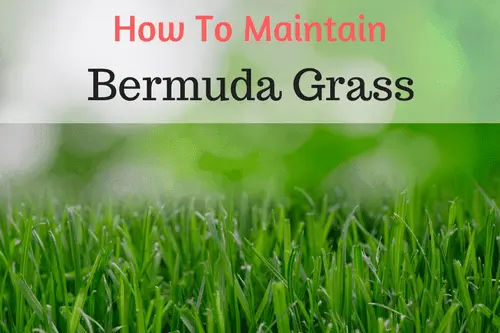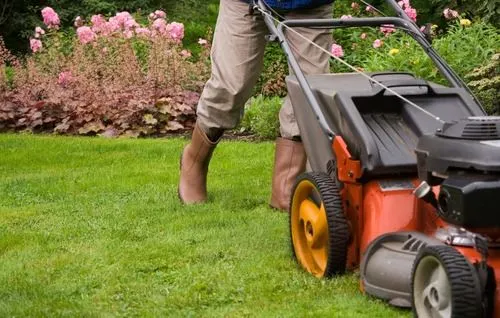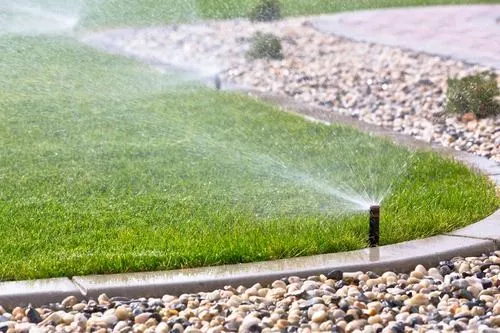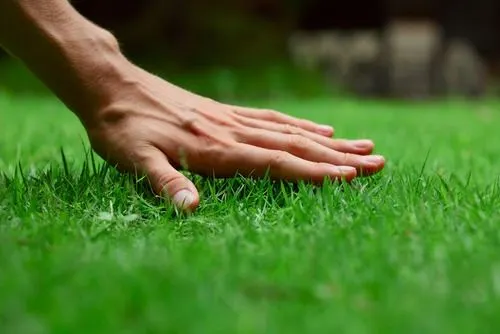
Bermuda grass is a great choice to keep your lawn looking its best. This grass variety grows low to the ground and is extra tough, so it provides good ground cover even in adverse climates.
It also withstands high levels of foot and pet traffic well. While taking care of Bermuda grass isn’t particularly difficult, it’s important that you understand the primary components of care to keep your lawn looking its best all year long.
Specifics on Bermuda Grass
This grass variant is a perennial, so it does not usually require reseeding each year.
It is characterized by its rich green color and medium to fine texture and does very well in most yards. Likewise, Bermuda grass is often used to cover golf fairways and putting greens, particularly in the South.
Bermuda grass boasts many advantages when compared to other grass varieties. For example, it grows aggressively, requires minimal maintenance, and tolerates heat and even drought very well.
It is important to note, however, that this family of grasses generally takes on a brown shade during the winter months and does not thrive in shady spaces.
Proper Lawn Treatment for Bermuda Grass
1. Mow Grass Properly
Bermuda grass is considered one of the most challenging grass types to mow, but that it typically because most individuals try to use the incorrect lawnmower.
For optimal results, Bermuda grass should be mowed to a height of one to one-and-a-half inches. Most lawn mowers are unable to mow to this height without tearing up the yard.
To effectively mow Bermuda grass, you need to utilize a reel mower. This can be achieved by starting early in the season and slowly working toward a height of one inch.

2. Avoid Bagging Clippings
Bermuda grass clippings should not be bagged. Recent studies suggest that allowing the clippings to remain in the yard helps restore the nitrogen levels in the soil and eliminates the need for added fertilizer.
The clippings decompose naturally and reduce the risk of thatching issues and disease.
3. Water The Grass Properly
Every lawn needs water periodically to remain healthy and green. This water can come from natural rainfall or man-made irrigation.
While you probably would prefer to rely on natural rainfall, this isn’t always possible. Especially for Fort Worth lawn care, manually watering your lawn is a necessity.
You can tell that your grass is in need of extra water if the blades are bowing down a bit. It should only need to be watered once or twice a week.
To sufficiently water your lawn, you’ll want to water to a depth of approximately six inches. This depth will promote deeper root growth to protect your Bermuda grass from heat and drought typical of the hot Southern climate.
To determine if you have watered the grass sufficiently, try pushing a screwdriver into the ground. If it sinks in to a depth of six inches easily, you have watered the lawn enough.

4. Aerate The Lawn
Aeration is the process of poking several small holes into the soil to allow more nutrients to absorb into the soil to the roots.
These holes also allow oxygen and water to permeate the soil. A core aerator is typically the best option for your Bermuda grass lawn.

To properly aerate your lawn, you’ll want to do it twice – once in one direction and again in the opposite direction. You should aerate your lawn in early summer.
If you want to take the guesswork out of caring for your Bermuda grass, hire a local and reliable lawn service provider, like Xtreme Lawn Care.
We are a Fort Worth landscaping service that will provide you with the care you need to keep your lawn looking pristine all year long, including grub treatment.
Call and schedule your appointment today! (817) 880-6052



Comments (0)
Thanks for your comment!
Thanks for your feedback! Your comments have been successfully submitted! Please note, all comments require admin approval prior to display.
Error submitting comment!
There is a problem with your comment, please see below and try again.